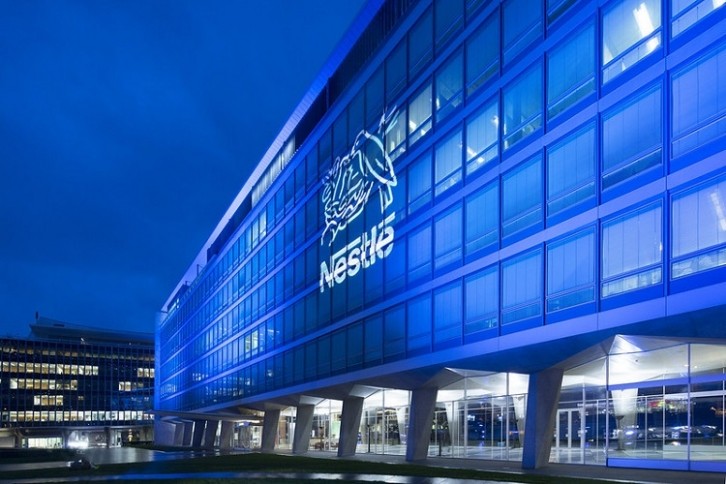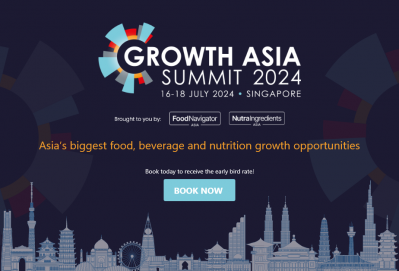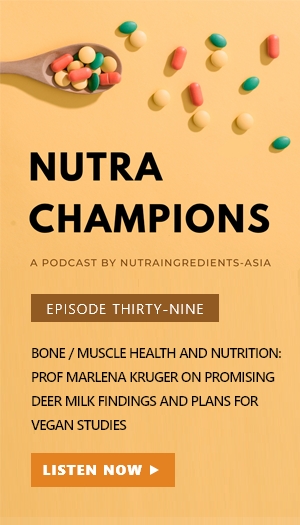Nestlé consumers trade down, favour private label amid ‘unprecedented’ inflation

Nestlé’s full-year results are in and paint a picture of reduced consumer demand around the globe. The reason? Shoppers have been trading down and turning to private label alternatives, according to the FMCG major, who closely ties the trend to inflation.
Over the last two years, industry has observed a food price inflation spike ‘of historical proportions’, Nestlé CEO Mark Schneider told journalists during a press briefing.
“It’s fair to say that it’s a one in 50-year event. The last time we have seen two consecutive years of similarly high food price inflation was in 1973 and 1974.”
For Nestlé, reduced volume growth is therefore ‘understandable’, given that against this backdrop consumers will have shifted to lower priced brands or favoured private label offerings. And in some geographies, Nestlé faced hyperinflation – something Schneider said that company hasn’t grappled with for ‘decades’.
But the trend is reversing, with Nestlé seeing ‘clear signs’ of normalisation in 2023. “We expect this trend to continue in the coming quarters,” added outgoing CFO François-Xavier Roger.
Nestlé plans to recover from negative volume growth
Prior to the COVID-19 pandemic, Nestlé experienced several years of volume growth – which the company refers to as real internal growth, or RIG. But like many in the food sector, the pandemic kickstarted a period of ‘heavy’ turbulence.
Nestlé’s full-year results for 2023 in numbers
- Organic growth reached 7.2%, with pricing of 7.5% and real internal growth (RIG) of 0.3%.
- Total reported sales were CHF 93.bn (€97.5bn), representing a decrease of 1.5% compared to FY 2022.
- The underlying trading operating profit margin was 17.3%, increasing by 20 basis points on a reported basis and by 40 basis points in constant currency.
- Free cash flow was CHF 10.4bn, an increase of CHF 3.4 bn following a significant reduction in working capital.
- The Board is proposing a divided of CHF 3.00 per share (an increase of five centimes).
Followed by a period of ‘unprecedented’ inflation, CFO Roger attributes these factors to ‘significant volatility’ that ‘clearly disrupted the components of organic sales growth’.
Nestlé does not expect this trend to continue, but also acknowledges volume growth may dip further south before righting itself. In 2013, the company observed signs growth was more closely linked to volume than pricing and is ‘confident’ in its ability to return to positive RIG. Roger expects RIG to return towards pre-COVID levels over the course of 2024.
But the phasing of RIG is not expected to be linear, he warned, suggested it will likely be weighted towards the second half of the year. “In the first quarter of 2024, RIG could be below the first quarter of 2023…”
As to how the company plans to keep prices down, and in turn reincite consumers to Nestlé’s brands, CEO Schneider suggested steadying inflation is helping to stabilise the market.
“The situation on inflation and pricing this year is going to be a lot more nuanced [compared to] the two previous years. So rather than reflecting all commodities and all input costs going up I think you will have select categories that will see increased input costs,” he said, citing sugar, cocoa, and Robusta coffee, “[but] others have come down. The situation is going to be a lot more nuanced.”
How did Europe fare compared to other geographies?
In Europe, sales were slightly down for 2023: CHF 19.09bn compared to CHF 19.12bn in 202.
Highest sales were achieved in North America, followed by the combination of Asia, Oceania and Africa, and then Europe.
Greatest growth was observed in Latin America, from CHF 11.81bn in 2022 to CHF 12.19bn in 2023.
Balancing affordability and premiumisation
It is unsurprising that as consumers trade down, demand for Nestlé’s more affordable offerings has also grown. These more affordable products are helping Nestlé regain market share from private labels. According to CFO Roger, private labels may have now reached the ‘full potential of what they can achieve’.
But as demand for Nestlé’s affordability offerings increase, so too does demand for its premium products. Over the last couple of years, the company has observed ‘two extremes’, explained Roger. “Both premium and affordability is growing faster than what is in the middle: the mainstream offering.”
Indeed, premiumisation has been growing for over a decade. Not to be confused with the luxury segment, for Nestlé ‘premiumisation’ is defined as products priced at 20% and higher above the mid-point of pricing in a category.
“Premiumisation has done wonders to our organic growth and also to our margin,” said CEO Schneider on the call. “We have increased the share from 11% in 2013 to now 23% - a three times increase over the decade.”
The CEO continued: “Clearly premiumisation, as an across-the-spectrum trend globally, is something we’re very committed to.”
Nestlé also remains committee to affordability, which in emerging markets brings ‘significant’ nutritional benefits to the economically challenged, we were told. “That drive is not ending. This is something that is also expanding, and also making good business sense for us.”
Which product categories performed best?
By product category, Purina PetCare was the largest contributor to organic growth. Coffee saw high single-digit growth, as did infant formula – based on continued momentum for premium infant formula including human milk oligosaccharides (HMOs).
Dairy reported mid single-digit growth, led by fortified milks, coffee creamers and home-baking products. Confectionery recorded high single-digit growth, fuelled by double-digit growth for KitKat.
Robust demand for Maggi across geographies and segments was observed, while water posted mid single-digit growth, led by S.Pellegrino and Acqua Panna.
Nestlé looks to 2024 and beyond
Looking forward, Nestlé expects organic sales growth around 4% and a moderate increase in the underlying trading operating profit margin. Underlying earnings per share in constant currency is expected to increase between 6-10%.
“Looking to 2024, we are prioritizing volume- and mix-led growth with increased brand support, as we enhance value for consumers through active innovation and renovation, premiumization, affordability and more nutritious options,” said Schneider. “We will continue to focus capital allocation on our fast-growing billionaire brands, which enables us to deliver dependable growth while enhancing brand loyalty.”
The company has confirmed its 2025 mid-term targets, which it hopes will see mid single-digit organic sales growth and an underlying trading operating profit margin range of 17.5-18.5% by 2025. Underlying earnings per share is in constant currency to increase between 6-10%.
“To drive market share gains, our key priorities are delighting consumers through differentiated offerings and focusing on superior execution. We are confident that we have the right strategy, portfolio and capabilities to deliver on our 2025 targets."













